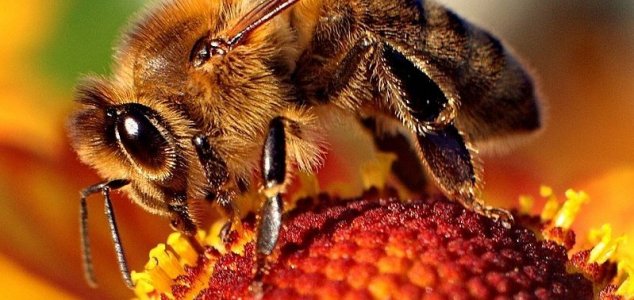Science & Technology
October 7, 2017 · 11 comments
11 comments

Bees have been in rapid decline in recent years. Image Credit: CC BY-SA 4.0 Maciej A. Czyzewski
Two-fifths of the 198 samples tested contained two residues and ten percent contained up to five.
The discovery not only highlights how bee populations are being exposed to these chemicals but also suggests that humans may be consuming them on a regular basis.
"Beyond doubt... anyone regularly eating honey is likely to be getting a small dose of mixed neurotoxins," said Dave Goulson, Professor of Biology at the University of Sussex.
"In terms of acute toxicity, this certainly won't kill them and is unlikely to do measurable harm."
"What we don't know is whether there are long-term, chronic effects from life-time exposure to a cocktail of these and other pesticides in our honey and most other foods."
Source: Independent | Comments (11)
Pesticides found in 75 percent of all honey
By T.K. RandallOctober 7, 2017 ·
 11 comments
11 comments
Bees have been in rapid decline in recent years. Image Credit: CC BY-SA 4.0 Maciej A. Czyzewski
Scientists made the alarming discovery during an investigation in to the prevalence of pesticide residue.
The findings, which have been described as 'sobering' and of 'serious environmental concern', suggest that nerve agent pesticides harmful to bees and potentially harmful to humans can be found in approximately three quarters of all honey produced around the world.Two-fifths of the 198 samples tested contained two residues and ten percent contained up to five.
The discovery not only highlights how bee populations are being exposed to these chemicals but also suggests that humans may be consuming them on a regular basis.
"In terms of acute toxicity, this certainly won't kill them and is unlikely to do measurable harm."
"What we don't know is whether there are long-term, chronic effects from life-time exposure to a cocktail of these and other pesticides in our honey and most other foods."
Source: Independent | Comments (11)

The Unexplained Mysteries
Book of Weird News
AVAILABLE NOW
Take a walk on the weird side with this compilation of some of the weirdest stories ever to grace the pages of a newspaper.
Click here to learn more

Support us on Patreon
BONUS CONTENTFor less than the cost of a cup of coffee, you can gain access to a wide range of exclusive perks including our popular 'Lost Ghost Stories' series.
Click here to learn more
Ancient Mysteries and Alternative History
Other World News
Spirituality, Religion and Beliefs
Russia and the War in Ukraine
Total Posts: 7,778,105 Topics: 325,536 Members: 203,912
Not a member yet ? Click here to join - registration is free and only takes a moment!
Not a member yet ? Click here to join - registration is free and only takes a moment!

































Please Login or Register to post a comment.